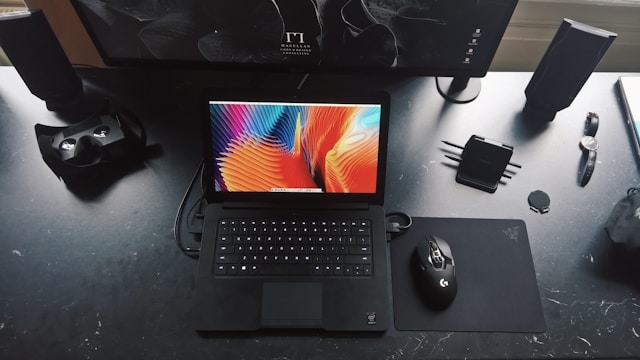Hey folks, Alistair Finch here! For over 15 years, I’ve been wrestling with the wild world of virtualization and application delivery. One trend I’ve seen explode is Bring Your Own Computer (BYOC) policies. It’s all about letting employees use their personal devices for work. Sounds great, right? Well, it can be, but it’s not all sunshine and rainbows. So, let’s dive into the nitty-gritty of BYOC, what it offers, and how to avoid the pitfalls. Think of this as your survival guide to the BYOC jungle. I’ll share what I’ve learned, and hopefully, it’ll help you make the right decisions for your business.
The Alluring Benefits of BYOC
Okay, let’s start with the good stuff. BYOC can be a real game-changer if done right. First off, cost savings! Companies can save a bundle on hardware. I mean, why buy everyone a new laptop when they already have one sitting at home? Then there’s the productivity boost. Employees are often more comfortable and efficient using their own familiar devices. I remember one company I worked with saw a 20% jump in employee satisfaction after rolling out their BYOC policy! Plus, employee mobility goes through the roof. Folks can work from anywhere, anytime. But, before you get too excited and start tossing out all your company-owned machines, hold on a sec…
The Dark Side: Challenges of BYOC
Now for the not-so-pretty side of BYOC. Security risks? Huge. Think about it: you’re letting personal devices, which might not have the latest security patches or antivirus software, access your company network. Data breaches become a real threat. Then there are the support issues. Your IT team now has to deal with a million different devices and operating systems. Compatibility problems pop up left and right. And don’t even get me started on data ownership and privacy. Who owns the data on that device? What happens if an employee leaves? What are the legal implications. These questions needs answers before you move forward, trust me. It’s a real mixed bag, isn’t it? But with the right approach, you can navigate these tricky waters. Let’s dig into some ways to do that.
Navigating the BYOC Minefield: Best Practices
Alright, so you’re still interested in BYOC? Great! Here’s how to make it work without losing your mind (or your company data):
- Strong Security Protocols: This is non-negotiable! Implement robust security measures, like mandatory password policies, two-factor authentication, and data encryption.
- Mobile Device Management (MDM): Use an MDM solution to manage and secure devices remotely. This allows you to enforce security policies, monitor usage, and even wipe data from lost or stolen devices.
- Acceptable Use Policies (AUP): Create a clear AUP that outlines what employees can and can’t do with their devices on the company network. This should cover everything from acceptable websites to data storage.
- Employee Training: Train your employees on security best practices. Teach them how to spot phishing emails, avoid malicious websites, and keep their devices secure.
I can’t stress enough how important these steps are. Think of them as your BYOC safety net. A strong policy is a must, but I’ve found that MDM is a real lifesaver. It gives you the control you need without being too intrusive. I remember one instance where we were able to remotely wipe a lost device just minutes after it was reported missing. Crisis averted! And remember, security isn’t just about technology. It’s also about education. Make sure your employees are in the loop.
Security Deep Dive: Fort Knox for Your Data
Let’s talk security. It’s the elephant in the room, and we need to address it head-on. Data encryption is your first line of defense. Encrypt everything: emails, documents, the whole shebang. Next up, MDM software. As I mentioned earlier, this lets you control and monitor devices remotely. And don’t forget two-factor authentication. It’s an extra layer of security that can stop hackers dead in their tracks. The key here is to have a robust security policy that’s actually enforced. No exceptions! Set minimum standards for device security, and don’t be afraid to say no to devices that don’t meet those standards.
Legal Landmines and Compliance
This is where things get really interesting. You need to be aware of the legal and compliance issues related to data privacy and intellectual property. Regulations like GDPR and CCPA have strict rules about how personal data is handled. Make sure your BYOC policy complies with all applicable laws. Consult with a legal expert to ensure you’re covered. Trust me, it’s worth the investment to avoid potential fines and lawsuits.
I once worked with a company that didn’t take compliance seriously. They ended up paying a hefty fine for violating data privacy regulations. It was a painful lesson, but it taught them the importance of doing things right from the start. This applies to everyone, but I especially urge small businesses to pay special attention to the legal and compliance side of things. It’s easy to get caught up in the excitement of new technology, but don’t let that blind you to the legal implications.
The Bottom Line: Is BYOC Right for You?
So, is BYOC worth it? Well, it depends. It can save you money, boost productivity, and improve employee satisfaction. But it also comes with significant risks. You need to carefully weigh the benefits and challenges, and have a solid plan in place before you roll it out. Don’t just jump on the BYOC bandwagon without doing your homework. Do a thorough cost-benefit analysis, talk to your IT team, consult with legal experts, and get input from your employees. The more prepared you are, the better your chances of success. Now, I’m curious to hear about your experiences. Share your thoughts and questions. Until next time!







